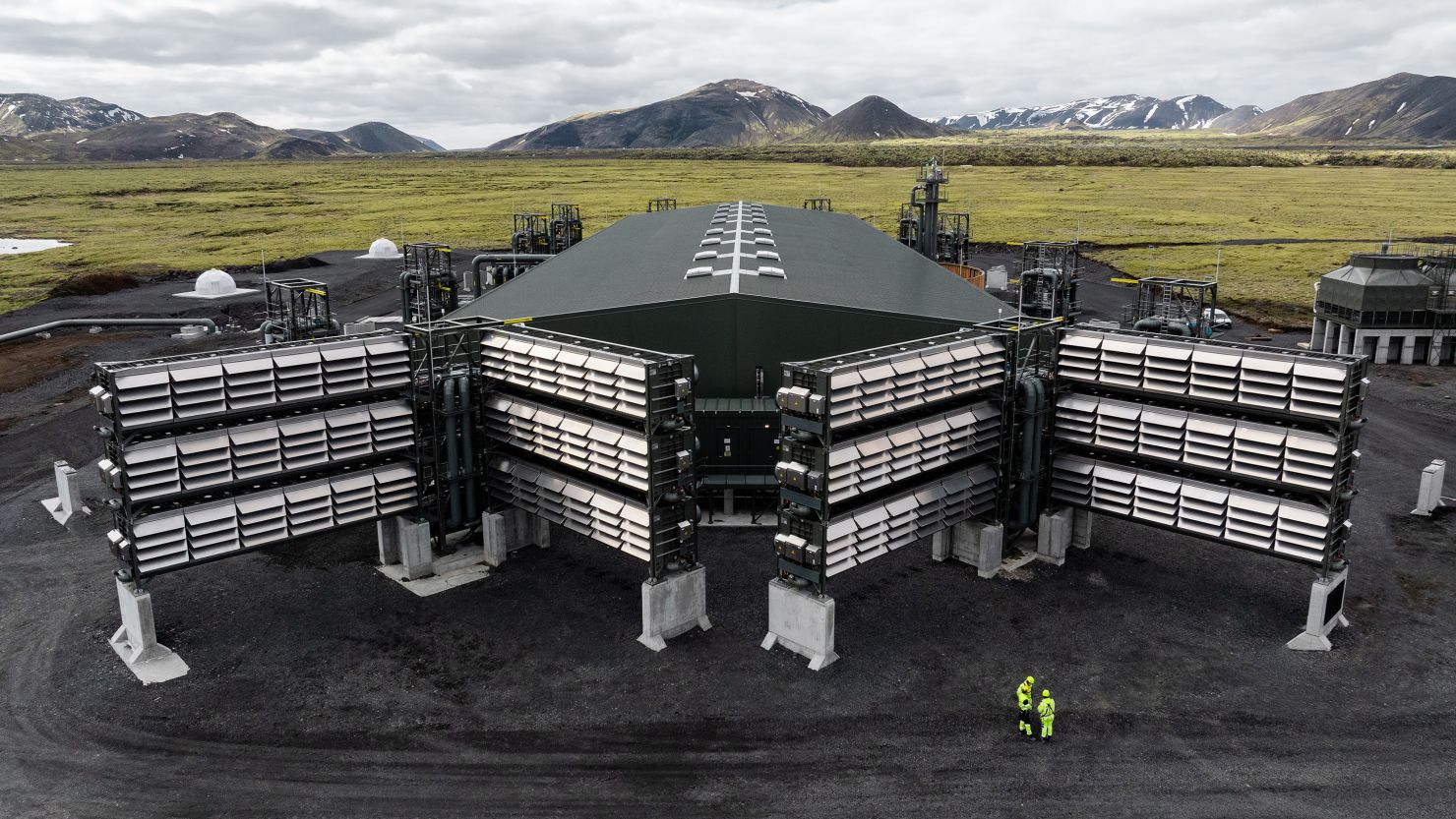⇧ [VIDÉO] You may also like this partner content
A “giant pollution vacuum cleaner” called “Mammoth” was recently put into service in Iceland. Designed by Swiss company Climeworks, it is the largest carbon dioxide capture plant ever built. By increasing the capabilities of its previous model tenfold, Climeworks hopes to eliminate millions of tons of carbon dioxide by 2030.
While we thought Orca would remain the world's largest atmospheric carbon dioxide capture site for a few more years, startup Climeworks has just commissioned its successor, more ambitious than ever: Mammoth. This second power plant is located a few kilometers from Reykjavik, Iceland, in the middle of a field of hardened, moss-covered lava, just a few hundred meters from Orca.
If the Orca consists of eight superimposed containers (empty parts of the machine that capture carbon from the air) 10 meters high, the Mammoth stands out in the middle of this desert filled with moss and stones with twelve containers. The assembly infrastructure began ventilating air last Wednesday. It works by direct air capture (DAC), drawing in air to extract carbon dioxide using a chemical process.
Show a strong climate message 🌍
36,000 tons of carbon dioxide are absorbed annually
Construction of the mammoth began in June 2022. Today, although the plant is in operation, it is not fully completed. Climeworks plans to install another 72 collection containers, in addition to the 12 already installed, by the end of the year. The gas captured by these containers will then be compressed and dissolved in water before being injected underground (at a depth of 700 metres), where it will naturally and gradually (within approximately two years) be turned into stone on contact. Thus, the carbon will be permanently “trapped”.
In order to improve this “isolation” process, Climeworks partnered with the Icelandic company Carbix. When it comes to powering the entire process, Climeworks relies on power from the ON Power geothermal plant.
According to Climeworks, 10,000 tons of carbon dioxide have so far been captured and stored each year worldwide, including 4,000 tons by orcas. However, once Mammoth is fully operational, the plant will be able to extract 36,000 tons of carbon dioxide from the atmosphere annually. This equates to removing around 7,800 petrol cars from the road (annually). ” We went from a few milligrams of carbon dioxide captured in our lab 15 years ago to a few kilograms, then to tons and thousands of tons “, says Jan Wurzbacher, founder and co-director of Climeworks.
See also

DCA, a controversial technology?
There is growing interest in carbon dioxide capture, but some world leaders say it is a controversial technology. For the latter, this is often an expensive and energy-intensive technology, and its widespread effectiveness still needs to be proven.
However, several projects (about twenty) developed by Climeworks and other startups would make it possible, by 2030, to reach 10 million tons of catch. In Texas, for example, a large power plant, Stratus, is under construction. According to Occidental, the oil company developing it, Stratos is expected to capture up to 500,000 tons of carbon annually.
For every ton of carbon dioxide stored, Climeworks hopes to be able to generate a carbon credit that allows its customers such as Lego, Microsoft and H&M to offset their greenhouse gas emissions. So far, the company has not indicated the exact cost per ton of carbon captured, but has indicated that it is about $1,000 per ton, the latter number generally considered a crucial benchmark, so that the technology can be implemented.

“Music guru. Incurable web practitioner. Thinker. Lifelong zombie junkie. Tv buff. Typical organizer. Evil beer scholar.”






More Stories
After the discovery of norovirus, these berries should not be eaten.
Mechanics Strike | WestJet Cancels Nearly 700 Flights, Affects Nearly 100,000 Passengers
Three 'basic' Airbnb listings: Owner shares how he easily skirted the rules